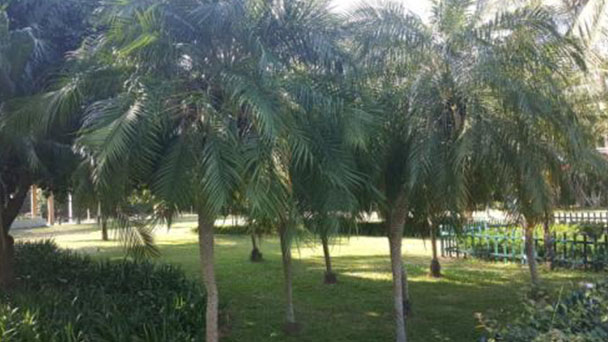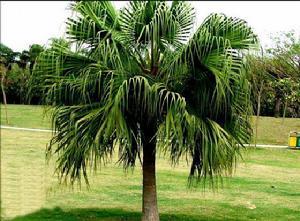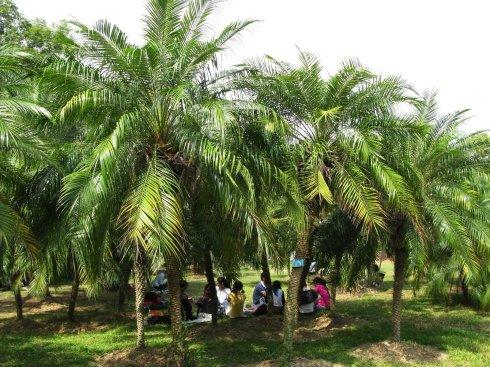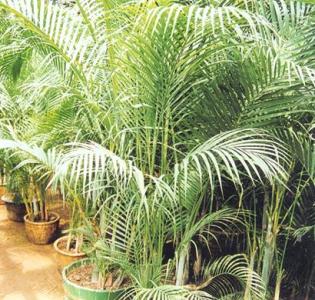Pygmy date palm (Phoenix roebelenii) profile
Written by Maggie
Oct 08 2021

Pygmy Date Palm (Phoenix roebelenii), also known as dwarf date palm, miniature date palm or robellini palm, is a plant of the genus Agaricus in the palm family. Pygmy Date Palm (Phoenix roebelenii) is an evergreen shrub, Luo umbrella type pinnate compound leaves completely cracked, soft and bent down, like shade, like moist, fertile soil.
Pygmy Date Palm Picture

Pygmy Date Palm (Phoenix roebelenii) Characteristics
Stems of Pygmy Date Palm (Phoenix roebelenii) are caespitose, often solitary in cultivation, 1-3 m tall, sparse taller, up to 10 cm in diam., with persistent triangular petiole base. Leaves are 1-1.5 (-2) m long; Pinnae is linear, soft, 20-30 (-40) cm long, dark green on both sides, abaxially covered with grayish chaff like scales along veins, in 2 rows, lower pinnae becoming elongated spines. Flame bracts are 30-50 cm long, split into 2 petals only on the upper part; The male inflorescence is nearly as long as the spathe, the female inflorescence is shorter than the spathe; Branches are long and slender, up to 20 cm long; Male flowers. Calyx ca. 1 mm, apex with triangular teeth; Pygmy Date Palm (Phoenix roebelenii) has 3 petals, needle-like, ca. 9 mm, apex acuminate; Pygmy Date Palm (Phoenix roebelenii) has 6 stamens;Female flowers subovate, ca. 6 mm long; Calyx apex is conspicuously mucronate. The fruit is oblong, 1.4-1.8 cm long, 6-8 mm in diameter, apically spiked, jujube red when ripe, with thin, jujube flavoured flesh.
Pygmy Date Palm (Phoenix roebelenii) Habits
Pygmy Date Palm (Phoenix roebelenii) likes light, not cold.Growing in the area of 480 meters to 900 meters above sea level, mostly on the banks of rivers, has been artificially introduced and cultivated.
Pygmy Date Palm (Phoenix Roebelenii) Distribution
Dwarf date palm (Phoenix roebelenii) is distributed in India, Vietnam, Burma and Guangdong, Guangxi, Yunnan and other places in mainland China.
Pygmy Date Palm (Phoenix roebelenii) Propagation
Dwarf date palm (Phoenix roebelenii) is generally propagated by seeding. Dwarf date palm (Phoenix roebelenii) is easy to pollinate and bear fruit after flowering. The fruit is ripe from October to November, and sown immediately after harvest or in April of the following year. The seeds are sown with large seeds. Sow in the basin, often keep the soil moist, 2 ~ 3 months can emerge seedlings. The next spring can be divided into seedlings, planted in small pots. Potted in northern areas, the first three years of poor plant shape, without ornamental value. Wait for three years before the full plant, planted in a medium size pot, for family viewing; They can also be propagated by tillers.

Pygmy Date Palm - one of the best indoor trees
Pygmy Date Palm (Phoenix roebelenii) Care
Pot Dwarf date palm (Phoenix Roebelenii) can be applied with an organic fertilizer solution once a week during its growth period. It requires relatively little fertilizer, and it is better to use slow-effect fertilizer. In the middle of April every year to change the pot for soil once, when changing the pot can be cut to the bottom of the old roots and old pot soil, with a new culture of soil planting. Pygmy Date Palm (Phoenix roebelenii) needs to be planted deeper at the edge of the pot than normal potted flowers due to rapid root growth. Otherwise, in late summer and early autumn, roots may overgrow the pot and water and fertilizer solution may flow out, which will affect the normal growth of the plant.
Potted Dwarf date palm (Phoenix Roebelenii) seedlings of 1-3 years old are slightly shade-loving, and can be cultivated and managed under semi-shade environment at normal times.More than 3 years old plants from the end of April to May should be moved to outdoor or balcony on the place of strong sunshine maintenance, will grow well. In autumn, the basin should be moved back to the sun. The lowest room temperature at night in winter should be about 8℃, and the room temperature in the daytime should be about 15℃. The temperature in winter and spring should not be too high, otherwise, after the new leaves grow indoors and move to the outdoors, serious sunburn will occur, and the leaves will become yellowish brown and lose their ornamental value.
Pygmy Date Palm (Phoenix roebelenii) is a pot plant with strong drought resistance. It will not water the pot soil for several days and will not dry out, but the lower leaves may dry out, affecting its ornamental effect. Pygmy Date Palm grows well in warm and humid conditions. Summer growing season needs to be watered twice a day, and should be sprayed to the leaves, so that the leaves are fresh, bright, and beautiful. At the same time can also increase the small range of air humidity, reduce the temperature, in order to facilitate its growth.
Pygmy Date Palm (Phoenix Roebelenii) Uses
Pygmy Date Palm (Phoenix Roebelenii) is a good tree for indoor greening.

Latest Updated
- Benefits of Bugleweed - 7 Science-backed Health Benefits
- Bugleweed Dangers & Side Effects - Is It Poisonous?
- How to Plant Evergreen Trees - What You Should Know
- When to Plant Evergreens - Grow Guide for Evergreen Trees
- 12 Wonderful Evergreen Shrubs for Your Garden
- 12 Popular Evergreen Plants with Pictures for Beginners
- When And How To Prune A Lilac Bush Like a Pro
- How to Grow & Care for Lilac Vine (Hardenbergia Violacea)
- Japanese Lilac Tree (Syringa Reticulata) Care & Propagation Guide
- Shumard Oak Pros and Cons - What to Know
Popular Articles
- Winter maintenance of Antirrhinum Majus
- How to Grow Terminalia Mantaly Tree
- How to Grow and Care for Crossostephium Chinense
- How to grow Antirrhinum Majus in spring
- Peristeria Elata (Dove Orchid) Profile: Info & Care Guide
- Underwatered Snake Plant (Sansevieria Trifasciata) - Signs And How To Fix
- How to Care for Brazilian Jasmine Plant (Mandevilla Sanderi)
- How to Grow & Care for Graptopetalum Purple Delight in Summer
- Rosa Chinensis (China Rose): Plant Growing & Care Tips
- How to Care for Baby Sun Rose (Aptenia Cordifolia)